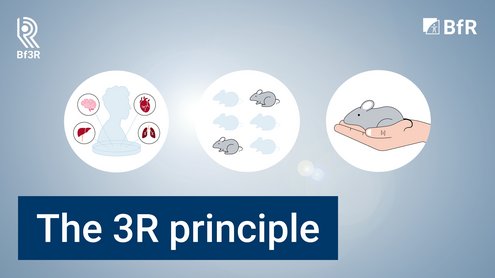Our mission - protection of laboratory animals
Our tasks
The German Centre for the Protection of Laboratory Animals (Bf3R) develops and refines applicable methods in accordance with the 3R principle. Furthermore the Bf3R stimulates research activities worldwide and promotes scientific dialogue.
Further information
The 3R Principle
In 1959 the British scientists William Russell and Rex Burch published the 3R Principle as a tenet of their experimental scientific study in the book “External Link:The Principles of Humane Experimental Technique”.
The aim of the 3R Principle is to avoid animal experiments completely (Replacement) and to limit the number of animals (Reduction) and their suffering (Refinement) in experiments to the absolute minimum.
The 3R-Principle
Legal basis
With the External Link:European Directive 2010/63/EU for the protection of animals used for scientific purposes, the EU legally acknowledged the internationally recognised 3R Principle for the first time in 2010. The provisions of the European Directive, and hence also the 3R Principle, were implemented in German law in 2013 with the amended External Link:Animal Welfare Act (TierSchG) and the External Link:Animal Welfare Laboratory Animal Ordinance (TierSchVersV).
Specifically, this means that every scientist who is planning an animal experiment and applies for an official permit, must answer the following questions in the permit application and provide scientific justification for their answers:
- Are there ways of avoiding the planned animal experiment by using other methods?
- Will the number of laboratory animals used be reduced to the absolute minimum?
- Are the stresses to which the animals are exposed minimised as far as possible?
The state authorities that are responsible for the approval of animal experiment applications check whether these questions have been answered in accordance with the current standard of knowledge.
The 3Rs Principle and its legal recognition is associated with the great goal of completely replacing animal experiments as soon as this becomes scientifically feasible.
